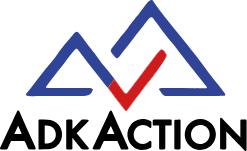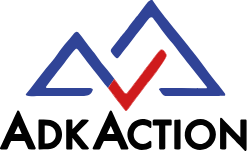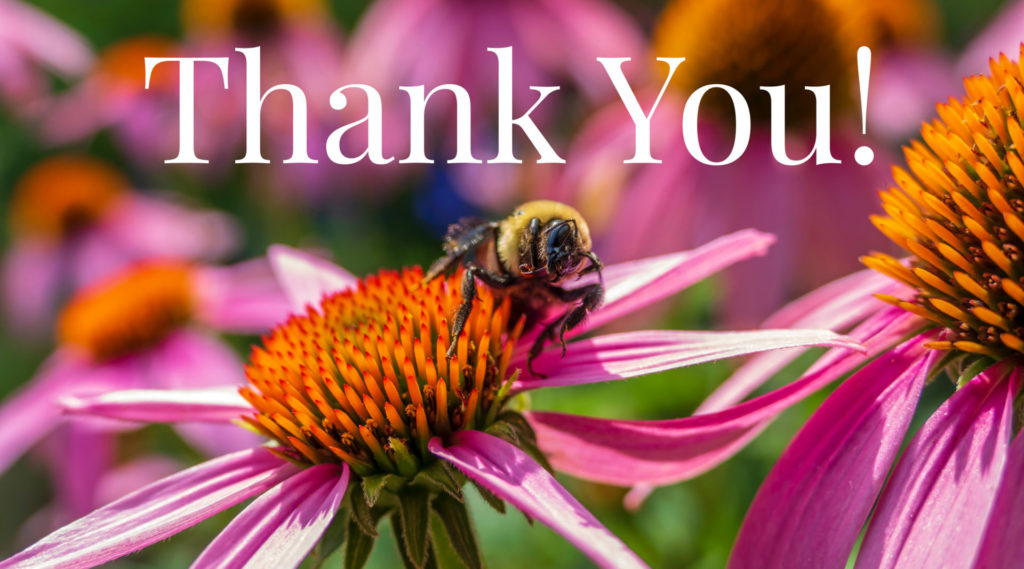
Thank you for ordering seeds from AdkAction’s Adirondack Pollinator Project! Would you like to donate $2 to cover the cost of one free seed packet?
You are one of many individuals whose actions, taken together, will make a huge impact. Here’s a quick planting guide to help you give your seeds the best start:
Below are some resources and information to help you continue promoting habitat for pollinators:

Congratulations on your pollinator garden! You are making a difference. Your efforts are increasing populations of Monarch butterflies, native bees, hummingbirds, and other pollinators in the Adirondacks. Just imagine how beautiful and beneficial your garden will be as it grows and flourishes. To get you started and ensure your garden flourishes and expands its value for pollinators, we have some tips and tricks for you!
If you are adding plants to an existing garden
- Remove weeds while they are small in the spring, and keep up with weeding throughout the season. Weeds outcompete many plants, robbing them of moisture, nutrients, and sunlight.
- Prune all overwintered stalks to within 6” of the ground.
- Divide and transplant plants that are overgrown or crowding others. Dig, divide, and transplant clumps around the garden or better yet create new pollinator plantings.
- Remove any dead, weak, or infected plants.
- Replace plants that you’ve removed with the new plants you’ve purchased from our annual plant sale.
- Clean-up garden beds by removing any dead and infected plant material.
- Add compost or fertilizer to beds close to plants and gently work it into the soil being careful not to damage plant roots.
- Avoid mulch, or at least leave some areas of bare soil exposed for ground nesting bees. If you decide to mulch some areas, cover bare earth with weed suffocating mulch like straw, shredded leaves, grass clippings, newspapers, compost, or natural wood chips.
- Weed – yes, again. Diligence is a gardener’s most powerful ally. Deal with weeds as soon as they appear so that in the future you will be able to spend less time weeding and more time enjoying your garden.
If you are creating a new garden from scratch, you might consider a no-till garden installation that will keep soil structure and microbes intact, keep sequestered carbon in the soil, and prevent erosion. To start a no till garden:
- Select an area in your yard that will receive at least 6 hours of direct sunlight.
- Lay out material such as paper grocery store bags, cardboard, or newspapers.
- Use a hose with a wand attachment or a watering can to wet the material down.
- Cover the material with heavy compost and leaves, grass clippings, or pine needles. Lay the organic material on thick, ideally 12 inches, and water it well.
- Plant directly into the thick compost and mulch mix.

Thank you to Landscape Architect and AdkAction Board Member Chris Cohan for creating these pollinator garden designs: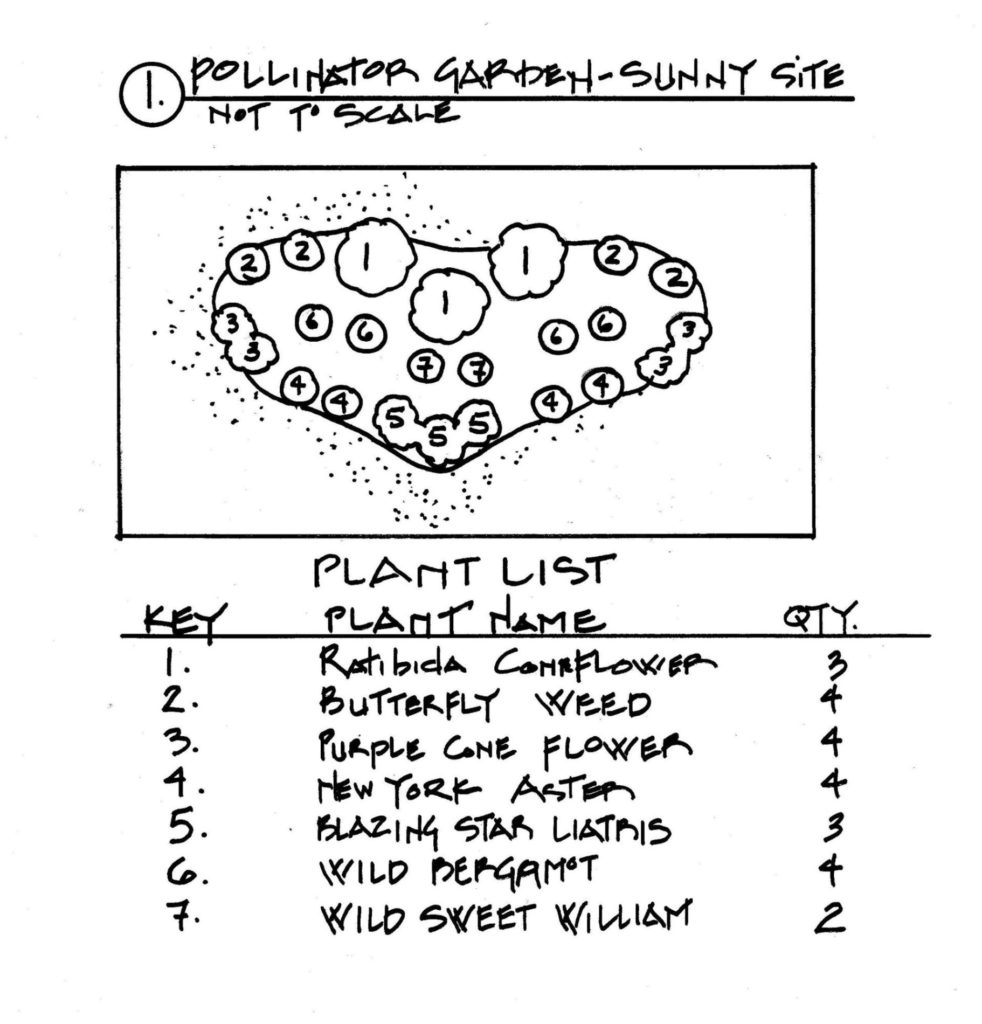
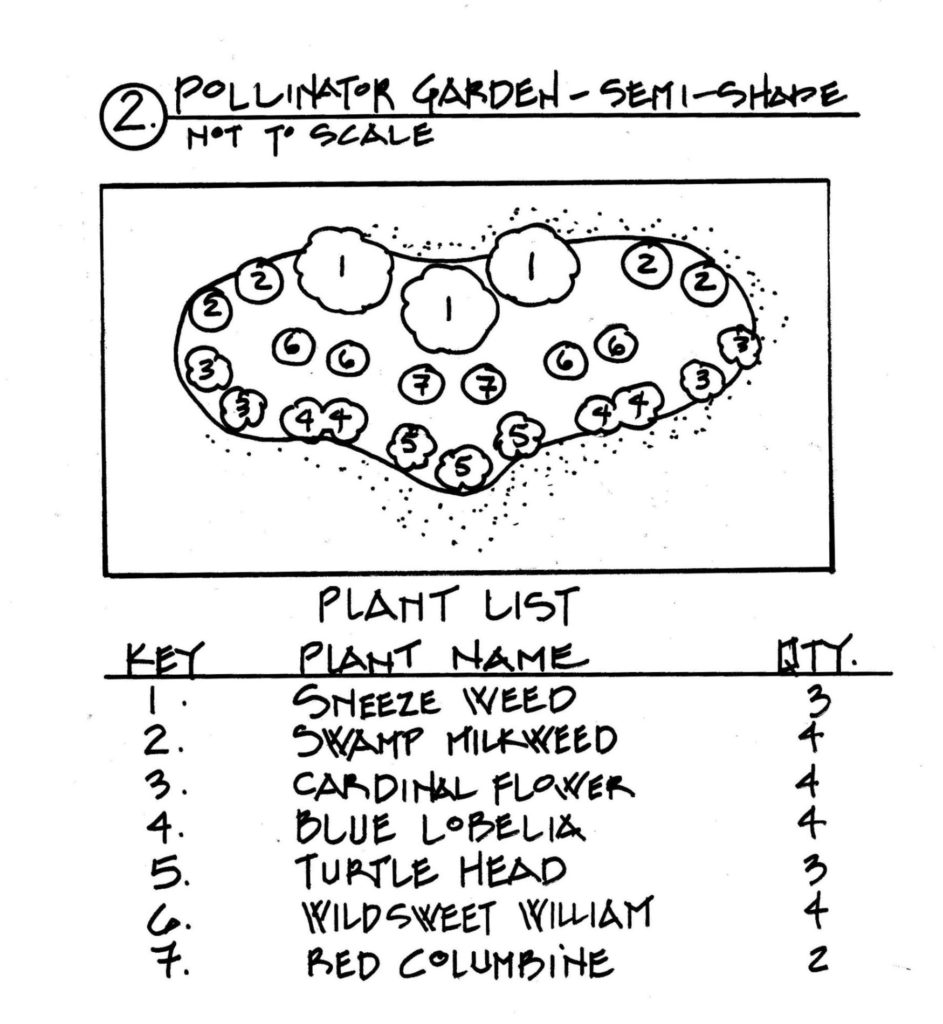
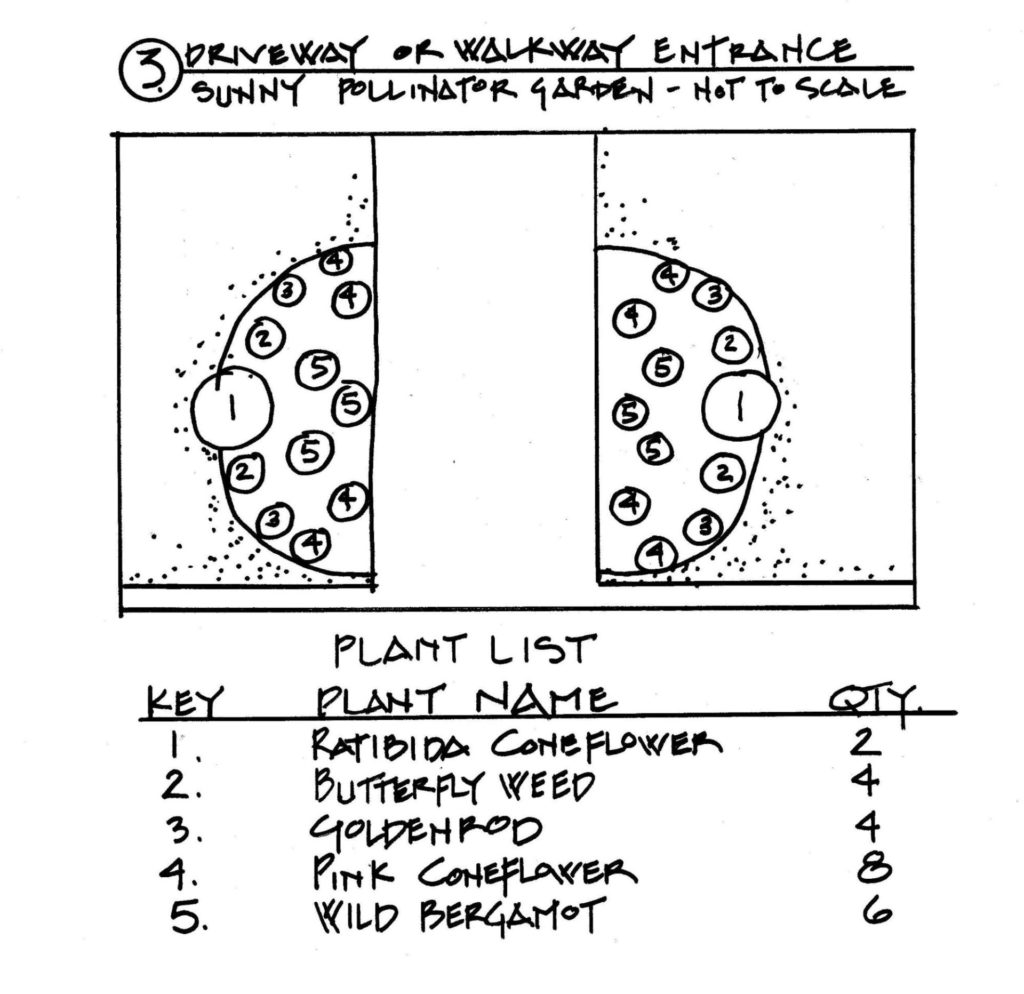
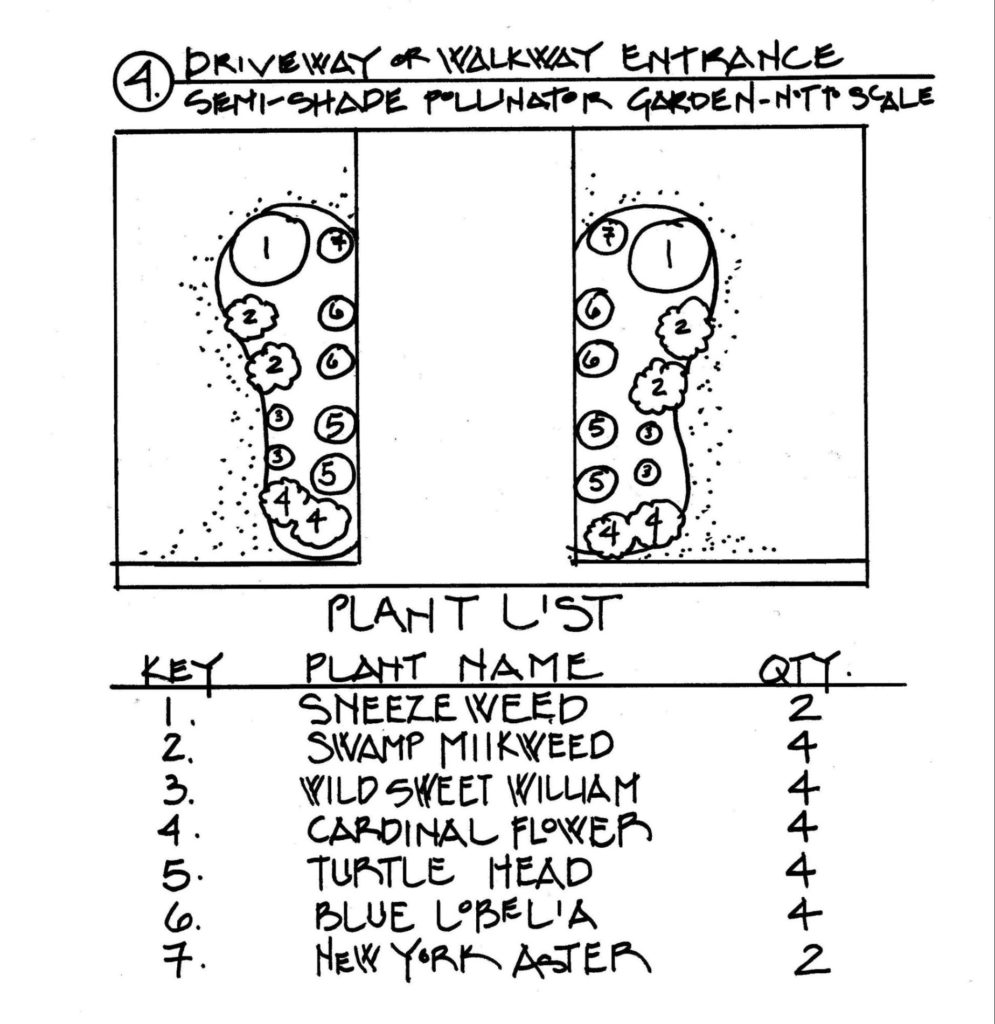
Planting Guides
Selecting Plants for Pollinators (Pollinator Partnership)
A regional guide for farmers, land managers, and gardeners in the Adirondacks and New England.
Pollinator Plants: Northeast Region (The Xerces Society: fact sheet)
Recommended native plants that are highly attractive to pollinators such as native bees, honey bees, butterflies, moths, and hummingbirds, and are well-suited for small-scale plantings in gardens, on business and school campuses, in urban greenspaces, and in farm field borders.
Native Plant Profiles and Lists (Lady Bird Johnson Wildflower Center: web site resource)
The Xerces Society has collaborated with the Lady Bird Johnson Wildflower Center to create plant lists that are attractive to native bees, bumble bees, honey bees, and other beneficial insects, as well as plant lists with value as nesting materials for native bees. These lists can be narrowed down with additional criteria such as state, soil moisture, bloom time, and sunlight requirements.
Regional Milkweed Guides A series of regional guides to the native milkweeds of North America, developed in cooperation with the USDA Natural Resources Conservation Service.
Monarch Nectar Plant Guides While native milkweed is critical to support of monarch breeding, these regional guides were created to address a need for evidence-based, monarch-specific nectar plants throughout the U.S. These guides were developed in partnership with the Monarch Joint Venture and National Wildlife Federation and are geared toward gardeners and landscape designers but are also be useful for land managers who are implementing large-scale monarch restoration projects.
Pollinator-Friendly Plants for the Northeast United States (USDA-NRCS: web site resource)
An in-depth guide to pollinator-friendly plants of the Northeast United States.
Xerces Society Pollinator Habitat Installation Guides (The Xerces Society: conservation guides)
These regional guidelines provide in-depth practical guidance on how to install nectar and pollen habitat for bees in the form of wildflower meadow plantings or linear rows of native flowering shrubs.
New England Pollinator Habitat Installation Guide: Conservation Cover (Draft)
New England Pollinator Biology and Habitat (USDA-NRCS: technical note)
An extremely lengthy, in-depth guide to bee conservation in New England. The document includes an overview of native bee and honey bee biology, farm management practices that impact pollinators, a color photo guide to common bee genera, and list of regionally appropriate plants for habitat restoration efforts on pages 25-38.
Field Conservation Management of Native Leafcutting and Mason Osmia Bees (University of Maine: Extension fact sheet)
This document includes information on the natural history of tunnel nesting native bees and how to enhance forage resources and improve nesting sites.
Indigenous Bees and Wild Blueberry Pollination (Nova Scotia Agricultural College: fact sheet)
An overview of native bee blueberry pollinators in Nova Scotia.
Wild Pollinators of Eastern Apple Orchards (Second Edition)
Produced by Cornell University, Penn State University, The Xerces Society, Northeastern IPM Center, USDA Department of Agriculture, and USDA National Institute of Food and Agriculture. This book includes a photo guide to bees most important to apple production in the East, steps to conserving wild bee populations, plant recommendations to enhance habitat, summary of bee toxicities for commonly used orchard pesticides, and links to additional information.
NYS Pollinator Protection Plan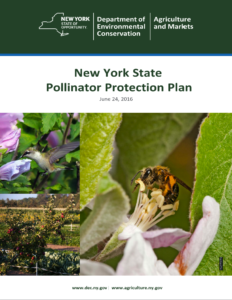
On June 24th, 2016, Governor Andrew Cuomo announced the recommendations of the NYS Pollinator Task Force in the “New York State Pollinator Protection Plan.”
At the same time the plan was announced, AdkAction.org decided to expand it’s Monarch Project to include all pollinators, and the Adirondack Pollinator Project was born. Our project elements are based on the recommendations made by the highly-qualified pollinator task force to ensure that our efforts are fruitful. You can read the Pollinator Protection in it’s entirety here.
Citizen Science
iNaturalist
Have you ever admired a flower and wondered what it was called or seen a butterfly and wished to know its name? iNaturalist will not only allow you to deepen your understanding of the flora and fauna you encounter, but will also help create a large poll of data that can aid in local and national conservation efforts.
> Download the app and learn more
Recent News
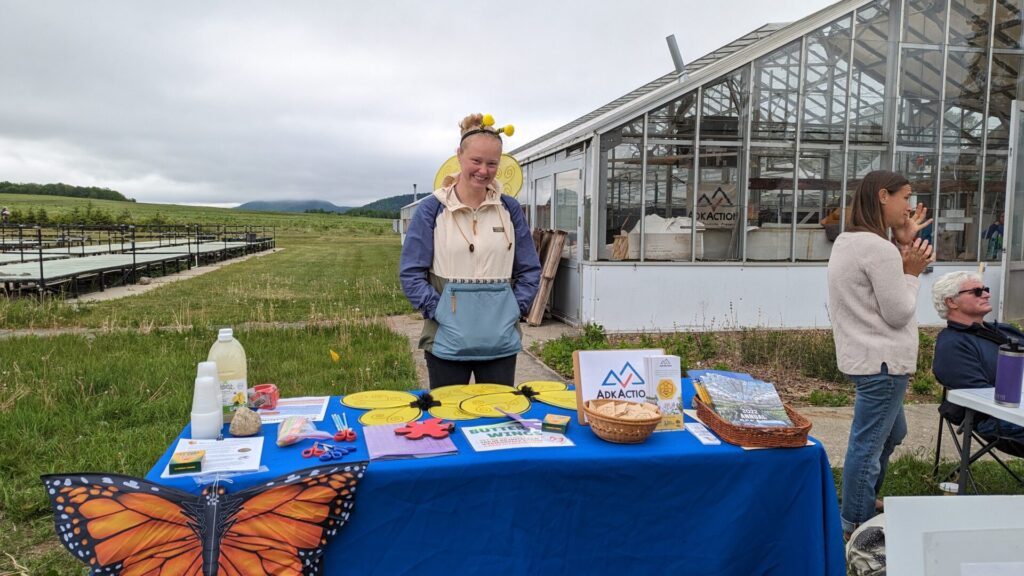
Meet Kayla, AdkAction’s 2023 Adirondack Pollinator Project Intern
Kayla is a rising senior at Colgate University who joins AdkAction as an Adirondack Pollinator Project intern. Having grown up in a small town outside of Albany, Kayla was lucky
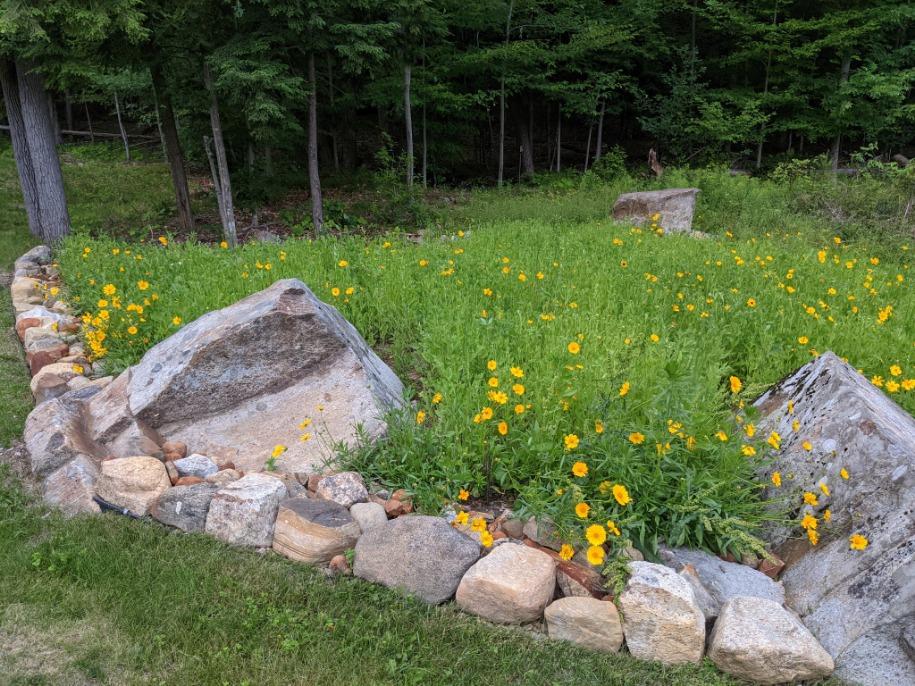
Creating Sustainable Lawnscapes
AdkAction projects range from expanding broadband access and addressing the housing crisis to protecting our water from road salt to community art festivals. While our projects are distinct, they do
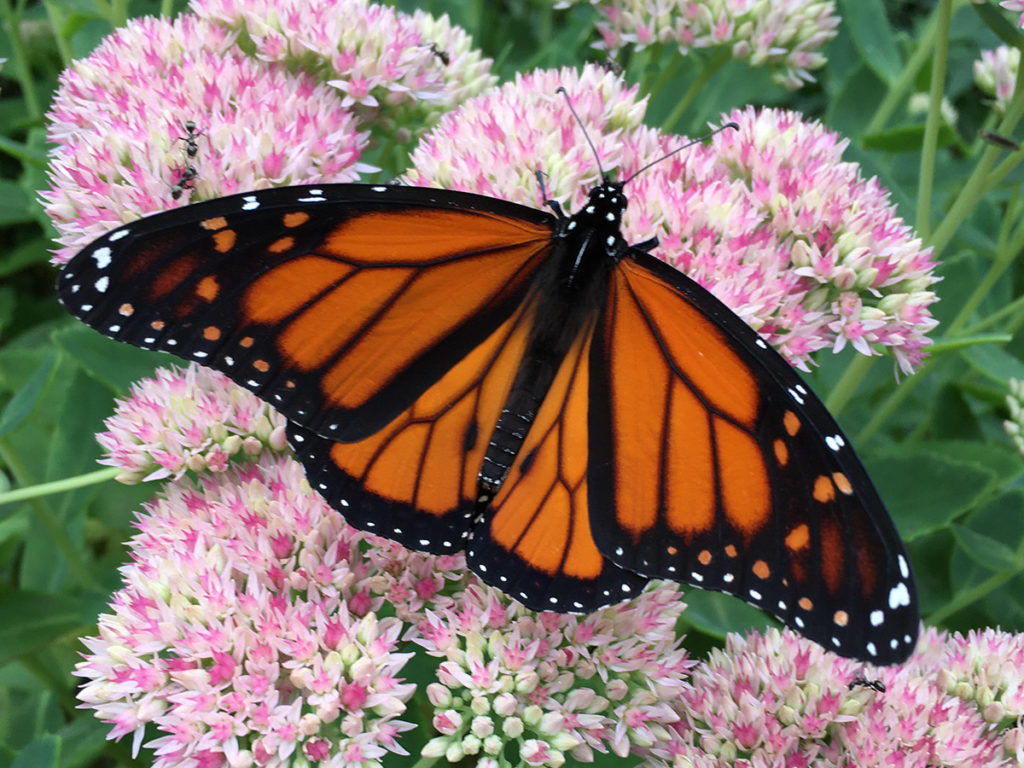
Library Buzz Program – Libraries Announced
Twenty Adirondack Libraries Selected for AdkAction’s Library Buzz Program AdkAction is announcing two pollinator-focused programs in 2023. In late 2022, AdkAction invited libraries across the Adirondacks to apply to AdkAction
Donate
Do you love hummingbirds and butterflies? Want to make sure they are still around for the next generation to enjoy? Make a gift now to support our hands on pollinator conservation efforts.
Explore Our Other Projects

Food Security
Food from small-scale family farms is often more expensive than food at chain grocery stores, putting it out of reach for many Adirondack families. It is also more sustainable, ethical, and better for our local economy. We are working towards a future in which Adirondack farmers can feed the region and local families can afford to buy local food by providing funding to purchase farm fresh products for qualifying families.
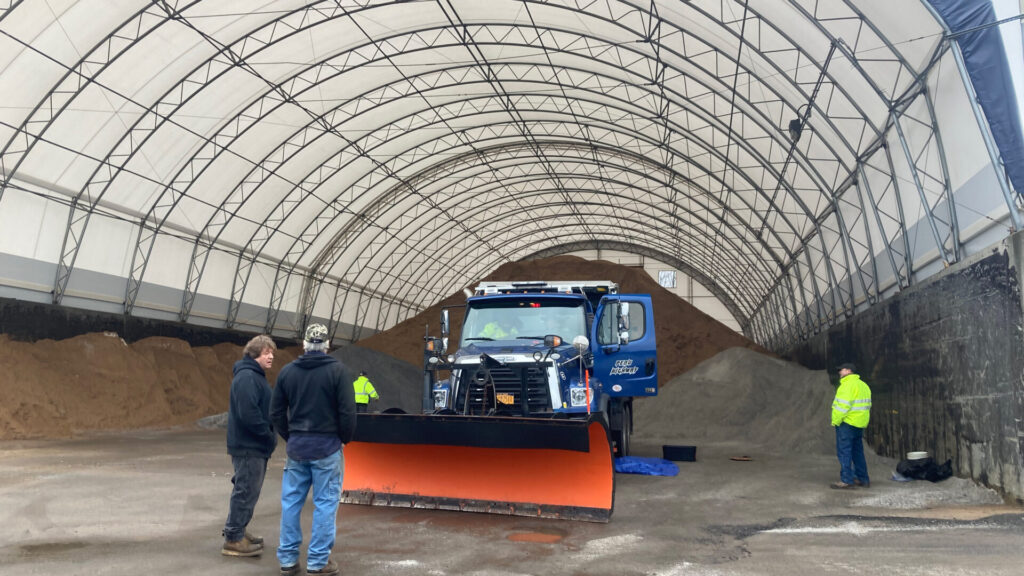
Clean Water Safe Roads
Road Salt pollution is threatening Adirondack waters. Studies now show that Adirondack lakes and streams near roads are contaminated and drinking water wells are becoming contaminated at an alarming rate.

Incubator: Long Term Rental Catalyst
The Land Bank Project’s goal is to address the affordable housing shortage for low and middle income families in the Adirondacks by taking a lead role in catalyzing the development of a regional land bank.
